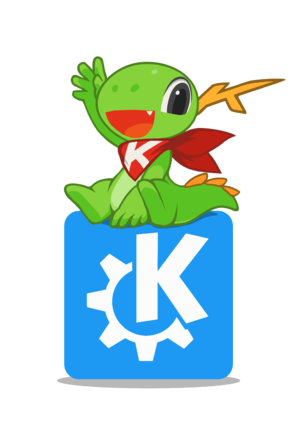|
|
| (12 intermediate revisions by one other user not shown) |
| Line 3: |
Line 3: |
| There are many benefits to becoming a KDE project: https://manifesto.kde.org/benefits/ | | There are many benefits to becoming a KDE project: https://manifesto.kde.org/benefits/ |
|
| |
|
| ⇝ [[Incubator/Incubated Projects|List of currently incubated projects]]. | | ⇝ [https://invent.kde.org/dashboard/issues?sort=created_date&state=opened&label_name=Incubation+Request List of currently incubated projects] |
|
| |
|
| | ([[Incubator/Incubated Projects|List of previous incubated projects on the wiki]].) |
|
| |
|
| == Requirements ==
| | The incubation process is described in [https://develop.kde.org/docs/getting-started/add-project/ KDE Developer - Adding a new KDE project]. |
| {{Input|1=<nowiki>
| |
| - [ ] Compliance with the [http://manifesto.kde.org KDE Manifesto]
| |
| - [ ] Governance similar to the other KDE projects
| |
| - [ ] Clear product vision
| |
| - [ ] Healthy team (healthy proportion of volunteers, inclusive towards new contributors, ideally more than one developer)
| |
| - [ ] Uses English for code and communication
| |
| - [ ] Continuity agreement must be in place with KDE e.V. for domains and trademarks if the authors disappear
| |
| - [ ] Recommended to attend [[Akademy]]
| |
| - [ ] Passing CI job for reuse linting
| |
| </nowiki>}}
| |
| | |
| Example CI job at e.g. [https://invent.kde.org/plasma/plasma-disks/-/blob/master/.gitlab-ci.yml plasma-disks] [https://invent.kde.org/plasma/plasma-disks/-/jobs plasma-disks reuse jobs[
| |
| | |
| == Process ==
| |
| === Candidate ===
| |
| First, send an email to [email protected] requesting a sponsor. This email must provide a description of the project to be incubated, include a list of the people committing to the project , and have a plan to be in compliance with the [https://manifesto.kde.org/index.html KDE manifesto]. For example, it must be hosted using Free Software tools (e.g. not on Github). | |
| | |
| === Incubating ===
| |
| During this phase, the sponsor actively works toward getting the project set up by doing the following:
| |
| * Make sure the project developers have developer accounts
| |
| * Contact sysadmin to get git repos (in the playground area) set up for the developers
| |
| * Keep on top of the process to make sure it's going in the right direction and not getting stalled
| |
| | |
| During this phase, the project cannot yet use the KDE brand or have a top level website on kde.org. If project becomes stalled or does not conform to the manifesto, it gets archived (see below).
| |
| | |
| === Active ===
| |
| During the Active phase, the project enters "KDEReview" and follows the process from there (see also [[Policies/Application_Lifecycle|Application Lifecycle]] and [[KDEReview]]. The project team is assumed and expected to behave like other KDE teams and respect the KDE manifesto.
| |
| | |
| === Stalled & Archived ===
| |
| A project is considered stalled when for one year, there is no release, no commits, and no mailing-list activity. Current maintainers are contacted to check what's happening. If there is no activity or no reply from existing maintainers, after a month then a call to new maintainers is done. If a new maintainer shows up he or she gets a six month trial. If after a month no new maintainer showed up, the project gets archived.
| |
| | |
| When a project gets archived, the source repo gets closed, the mailing list disabled, and only last download is available. If someone wants to pick it up, it goes back to the candidate phase.
| |
| | |
| === Notes ===
| |
| Here are [[Incubator/Notes|notes]] which led to the current process.
| |

